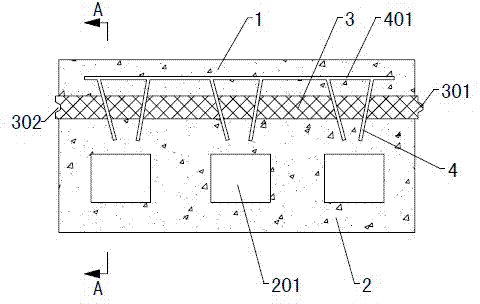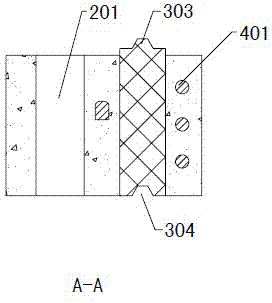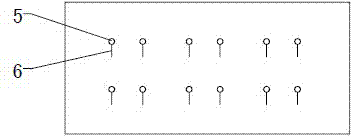Self-insulation building block and production process thereof
A technology of self-insulation block and production process, which is applied in the field of building materials, can solve the problems of poor freeze-thaw resistance, low block density, and low energy-saving efficiency, and achieve good self-insulation effect, good block quality, and energy-saving efficiency high effect
- Summary
- Abstract
- Description
- Claims
- Application Information
AI Technical Summary
Problems solved by technology
Method used
Image
Examples
Embodiment Construction
[0038] Figure 1~3 It is the best embodiment of the self-insulation block of the present invention, below in conjunction with the attached Figure 1~10 The present invention will be further described.
[0039] Refer to attached Figure 1~3 : the self-insulating block includes an inner wall part 2, an outer wall part 1 and an insulating layer 3 between the inner and outer wall parts 2 and 1, and the inner wall part 2 is vertically and evenly provided with three inner heat insulating cavities 201 , the inner and outer wall parts 2 and 1 are fixedly connected by a plurality of tie members 4 transversely passing through the insulation layer 3, and the outer ends of the plurality of tie members 4 are all fixedly connected to the tie members vertically located in the outer wall part 1 On the knotting net 401, the inner end of the tie member 4 is located in the inner wall portion 2 between the inner heat insulation cavity 201 and the insulation layer 3, and the inner end of the tie...
PUM
 Login to View More
Login to View More Abstract
Description
Claims
Application Information
 Login to View More
Login to View More - R&D
- Intellectual Property
- Life Sciences
- Materials
- Tech Scout
- Unparalleled Data Quality
- Higher Quality Content
- 60% Fewer Hallucinations
Browse by: Latest US Patents, China's latest patents, Technical Efficacy Thesaurus, Application Domain, Technology Topic, Popular Technical Reports.
© 2025 PatSnap. All rights reserved.Legal|Privacy policy|Modern Slavery Act Transparency Statement|Sitemap|About US| Contact US: help@patsnap.com



